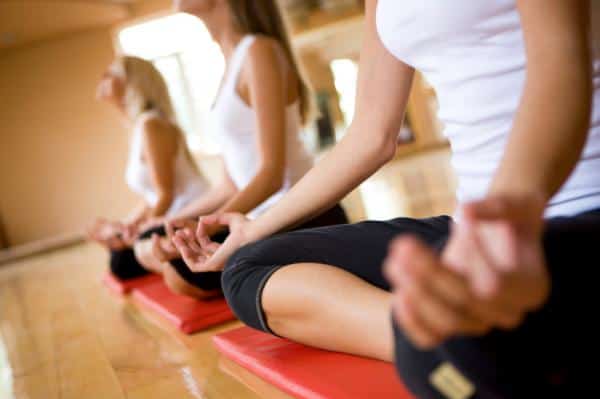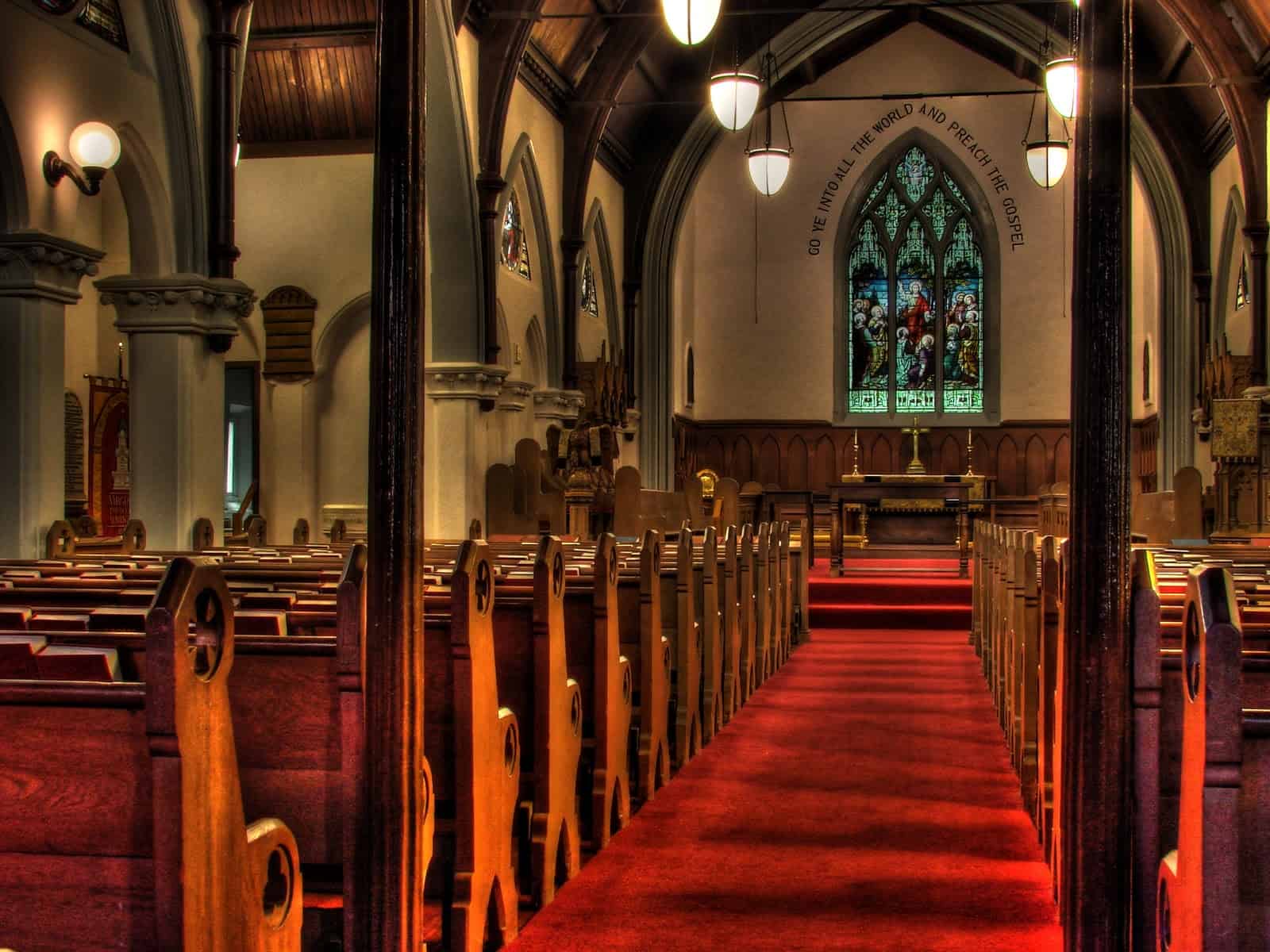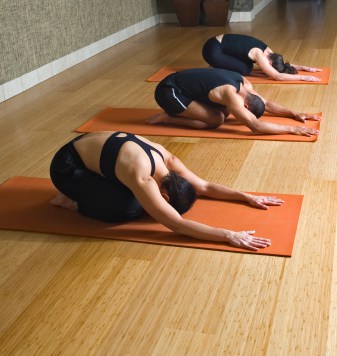Mass in the side chapels of urban parishes tends to draw pretty much the same crowd. A thin somber college student wearing outdated clothing, and not ironically, walks into the nave and kneels perfectly before sliding into the pew. Later in the communion line he will bow deeply and receive the white host on the tongue. Three or four men in business suits variously enter and kneel and close their eyes, the energy of work beginning to still and drift away. Just outside the door a homeless man smiles and mouths pieties. I’m blessed, thank you. God is good. A little something for food?
Nuns sit quietly. Other women look like nuns but are not. They sit here and there, alone with blue rosaries or booklets of traditional prayers. A young mother in a nylon windbreaker, strands of hair coming out of a knit hat, drops into a pew. Next to her is a four year-old who will sit without squirming or speaking the entire service.
The church I attend in St. Louis is not much different and usually I sit there happily amongst everyone–an unordained Jesuit in a black fleece waiting for the 5:15 mass to begin. It is hushed. People enter quietly, sit down and get to the business of prayer. It is easy to fall for the calm space, the simple ritual, the odd variegated assembly in these chapels, and I always do.
On this Friday evening, though, as I sit there and try to pray–or at least look like I am praying–I find myself slowly getting more and more agitated. It is New Year’s Eve and everyone, it seems, is talking. The night may justify the energy and the noise. Or it may not. Maybe it shouldn’t matter what holiday it is.
There are four different conversations going on. One of them is in the pew right in front of me. An older lady who could be a nun but is not tells her friend, with some urgency, about the style of her eyeglass frames. After several minutes listening to this and all the other chatter, I am completely irritated. I have become everyone’s dad, silent and furious at things out of order that he can’t control.
The priest walks up the aisle and mass begins. During a prayer called the Gloria, some people refer to God as “God” while others use the traditional “He.” (And then both camps go on later in the same prayer to call God “King” and “Father.”)
A group of people enter about twenty minutes late. One or two arrive with ten minutes left in mass. During the consecration of the Eucharist, most stay standing, while a few of us kneel. It is weird and dissonant and sad. When the liturgy is over the priest doesn’t even get to leave the sanctuary before everyone starts putting on coats and chatting up a proverbial storm. My anger refines, grows more pure and concentrated.
I did not used to be this way. I used to want church to be a place where everyone was comfortable just being themselves, talking and laughing and arriving whenever, in shorts and un-ironed shirts. If church was typically a place that called for rules, strictures, formality, the only thing that made sense to me was to torpedo all these things.
But then, recently, almost overnight it seemed, I became this “traditional” Catholic person. A man of the church prone to liturgical anger. A guy sitting in the fifth row of a basement chapel clutching a rosary and wondering what has happened to his world. This didn’t happen because I joined a religious order and converted to a deeper piety. I’ve been in the Society for nine years, and this new stance toward church is just now starting to take root. Only in these past few months have I become this person–someone who can’t stand it when the few minutes before a liturgy feel more like a garden club cocktail party than a preparation for the holy sacrifice of the mass. (The fact is, I don’t even know if there are garden clubs anymore–and if there are, would they even have cocktail parties. Still.) It disturbs me, a little, that I’ve become this way. But not enough to want to go back.
I think of Bikram Yoga. None of this would happen at my Bikram studio. They wouldn’t put up with it for a second.
***
The studio where I practice yoga is nestled in a strip mall next to a Great Clips and the Pacific Beach tanning salon, but its energy is much more sacred. You go into the hot room–105 degrees!–and you are expected to be silent. SILENT! To respect the practice of others. Everyone follows this. You enter the room and others sit there meditating, resting, centering, stretching, and everyone is hushed. And when class is over and you leave, or stay and lie in “final savasana” it is expected to be quiet too. Silence the whole way through. The room is always silent except for the teacher leading us through the poses.
This brown-carpeted space, assaulted from the walls and ceiling by heaters, is a refuge from the noise and randomness of everything else out there. Even on New Year’s Eve. My studio had a class at 10:30pm New Year’s Eve, and they did their yoga in silence, by the light of votive candles.
Every day at Bikram Yoga we have a certain routine, an unvarying ritual. We do the same thing in each class, the same poses, to the same words spoken by the same four or five teachers. The same instructions and little adjustments and exhortations. And these are the same words spoken by all Bikram teachers all over the world. This kind of yoga is actually “franchised” in a way, and carries with it highly specific rubrics, taught by the founder himself, Bikram Choudhury. Feet six inches apart, you can bend down to measure… Lean back, fall back, go back, way back, more back. And change… This pose helps regulate your sleeping cycles and prevent psychosis… Sassy rabbit, pull your towel up over your heels… Triganasana. Turn to face the window… Find your edge, and push. And push. And push. Change.
The one holy catholic and fairly apostolic church of Bikram Yoga. It is a place where people enter into suffering to attain a new kind of purification. We do yoga in this ridiculous heat chamber and sweat out toxins and dark thoughts and the tragedies of the day. We enter into poses and postures we once thought unimaginable. Poses that, by our sheer wills and some vital Spirit moving through the heat and spandex and foam mats, we manage to pull off grandly.
It feels like a new austerity. People used to do certain kinds of hard things willingly and needfully. Holy people in an earlier day would kneel in prayer for lengthy periods of time. Some allowed themselves only the plainest food in order to keep their hearts and their senses open to the spirit of Christ alone. They lashed themselves scrupulously for their sins. Pope John Paul II was known to pray all night on his knees or lying prostrate in front of the blessed sacrament.
Today, the hard thing all of these same people might do would be to enter silently and meditatively into a very hot room and contort their bodies in aerobic penance for ninety harsh and glorious minutes. If there was a pope of yoga he maybe would do Bikram from dusk till dawn.
This is not to endorse all the austerity practices of somewhat Pelagian Catholics, those who try to secure their salvation by squeezing themselves into a doom-ridden vision of how God wants them to live. (Namely rejecting the wonderful and holy things of the raucous world itself, where God exists and gladly.) It is to say however, that people, then and now, want to and will do hard things for outcomes they believe in–particularly spiritual, physical and emotional wholeness. And today those three things are fought and sweated and struggled for by many, many people through yoga.
At my studio, you cannot come late to class. If you arrive after class starts you are left in the cold. When the session begins the instructors encourage you and push you to stay in the room, no matter how hard it gets. But they let you leave if you need to–they’re not masochists. (Some would argue this point.) They scold you (some harshly, some gently) if you drink water while others are doing their poses. They call you out if you slowly melt your way into a pose while your fellow students are getting right into it. They tsk tsk if you distract yourself by wiping sweat away instead of just letting it drip off.
The teachers flail us and we take it because we pay for it and we love it and we want it. We want it because we know what it will do for us. And what it will do is actually what it does do. Over time the body changes, centers, grows peaceful. You move more fluidly, you live in your skin. And with this, the mind calms. In the body means you are in the mind, in a better way. Available to the sacrament of the present moment, as Dorothy Day would call it.
I love yoga and that people do yoga, and that I do yoga–especially this kind. I love too that it is a preparation for meditation. Yoga is really a practice of breathing. To help you focus, concentrate and deepen the breath. And the poses and the breathing are all intended to give you strength and flexibility for sitting in long periods of meditation. In a sense yoga was always meant as a preparation for prayer. A cultivating of the ground. A composition of place, as the Jesuit’s founder St. Ignatius would put it. A way for you to enter into a lively dialogue with the Almighty, (or however you connect with the holy.) I do yoga, I pray. They fit.
And then there is church. There is, to be more specific, a buzzing roiling mass on New Year’s Eve.
***
Okay, let me just say, at this point I was planning to go back to a discussion of church and highlight all the ways church is, these days, not like yoga. Not just the church I currently go to, but a number of Catholic churches and side chapels. A discussion that would make church look bad and yoga good in some kind of pointed commentary on the ironically shifting ground of the reverent and sacred in the cultural upheaval of today’s spiritual etc. And I could do this, and maybe it would be interesting or insightful or whatever. But the thought of writing it, or reading it after I’ve written it, sort of bores me. It bores me and makes me tired.
For instance, I’d have to wade into the middle of these tedious word games that Catholics play with each other when talking liturgy. After I told a priest friend about the noise and disunity at mass, he told me the church used to be seen as the house of God. Now it is seen as the house of the people of God. This was supposed to be a more appropriate term, I guess he was saying. And I thought, if someone can tell me the difference between God’s house and God’s people’s house, and what it has to do with being more reverent in a holy space, I will give them a shiny silver dollar.
So, I’d have to go into that. I’d have to parse phrases like “God’s” and “God’s people’s” and construct topic sentences and quote all sorts of Germans and so on and so forth. Deadly.
And then, to really do this right, I would have to get into the fact that there were changes made to the liturgy during the Second Vatican Council in the 1960‘s. These changes amounted to a reform of the liturgy, (or a “renewal”, a gentler term, which makes us think of springtime, or library books.) The whole point of the reform/renewal was basically to try and get the fans more involved in the game they were watching. In the last couple decades, though, there has been what is sometimes called a “reform of the reform” by people who didn’t like how the original reform was carried out. By co-opting the word “reform” from the original reformers these secondary reformers don’t have to sound like “disbanders.” Rather they can come off like people who claim the spirit of the original reformers, just with more Latin.
So if this essay were to enter the debate, I would have to call for some kind of yogic “reform of the reform of the reform.” And then painfully write thirteen footnoted pages on the renewed entwining of religious practices from East and West in the strip malls of suburban St. Louis.
Needless to say, I’m not doing it.
And regardless, church is church and yoga is yoga and they are similar and they are different and each is (or can be) an all-consuming way of life that could learn one from the other. But right now it does seem, okay, it does, that church could learn a bit more from yoga. At least as far as practice goes: in liturgy and ritual and the communion of the faithful. Or maybe it’s just the churches I go to. I don’t know. Either way, fine, church isn’t perfect, we all can grow.
And to take it a step further, when I really get down to what I’m trying to talk about, I don’t think it’s about inter-religious dialogue or what spiritual practice is better or anything like that. Mainly it’s about quiet. I guess in the end I just want a little less talking. Maybe my slipping into the awkward uniform of a reverence-seeking Catholic is primarily about chatter. Everything is so noisy, everywhere. In so many ways it is catastrophically loud out there. It feels like we are at a breaking point of noise, and something is going to give way. I do not know what, or where or how, but I just have that sense. The other shoe, a hundred thousand other shoes, are going to drop.
So I want something different. Not just in my own room, but in a place out in the world, with others. A silence that is shared. I want to enter a place where quiet is not only an expectation, but is so internalized by its devotees that they wouldn’t think of breaking it. I find this then, for a few precious minutes each day, at Bikram. People are quiet because, I think, they know how good it is. For themselves and for the others. They enjoy being quiet there. In fact, I think my fellow yoga students have fun being silent. As people walk down the hall toward the hot room, you get the sense that they are going to an amusement park. Oh, come on in with me. They let us be silent in here! It’s a riot! You’ll love it!
Along with everything else, this is what Bikram gives me. Silence, and calm, and silence. Most weekday masses do their best to be quiet too, and sometimes they pull it off. Every day at Bikram there is silence. I go as much as I can.




